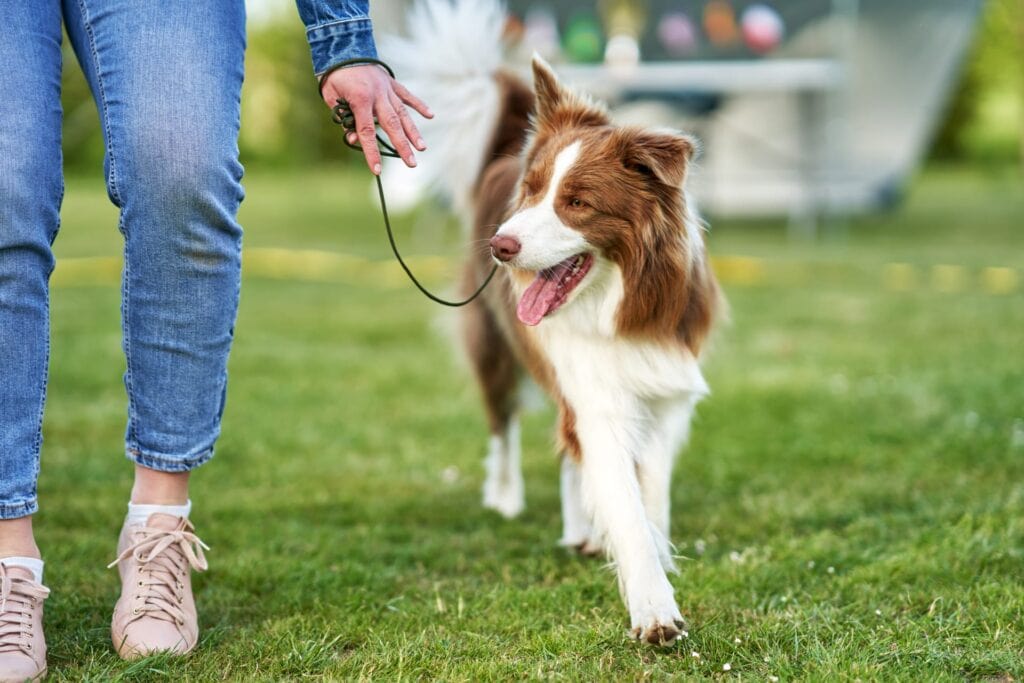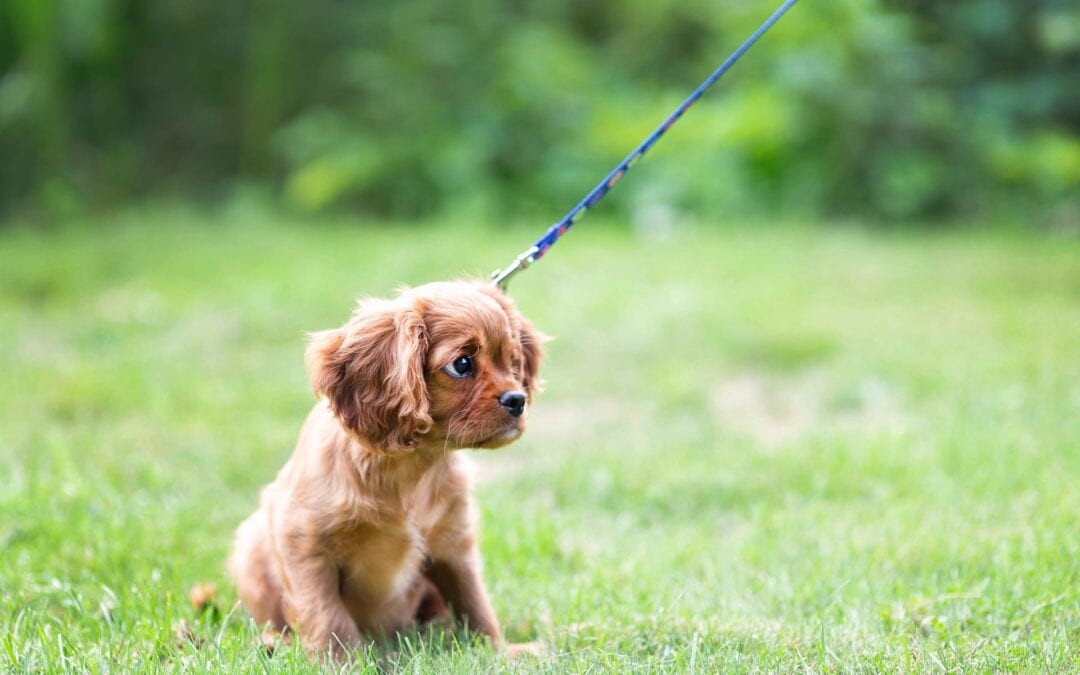Teaching a dog to walk on a leash shapes future adventures and deepens the bond between owner and pet. Dogs that master leash manners enjoy safer, more relaxing walks, which builds confidence for both parties. Knowing how to train a dog to walk on a leash brings structure to outings and can help prevent common behavior problems. This guide will explore how preparation, patience, and clear techniques can create stress-free strolls.
Getting Ready for Leash Training
Every great journey starts with the right tools. Trainers often recall introducing excited puppies to their first leashes with slow, playful sessions indoors before ever stepping outside. Choosing a leash that feels comfortable and secure makes a big difference in setting up early success. A lightweight, non-retractable leash often works best for beginners.
- The American Veterinary Medical Association recommends flat collars and standard six-foot leashes for control.
- Harnesses that clip at the chest can reduce pulling behaviors.
- Introduce the leash gear without pressure, letting dogs sniff and investigate first.
First Steps to Train a Dog to Walk
Starting indoors creates a quiet environment with fewer distractions. Trainers often use hallways or small rooms to introduce leash movement by rewarding dogs for walking beside them without pulling. Keeping initial sessions short but positive keeps enthusiasm high and frustration low. Short walks build into longer strolls as the dog becomes more confident.
- Use treats or toys to encourage the dog to stay close.
- Walk a few steps, stop, and reward calm behavior.
- Gradually add turns and direction changes to build focus.
How to Train a Puppy to Walk on a Leash
Puppies burst with energy and curiosity which makes leash training both exciting and challenging. Experts from the American Kennel Club suggest beginning leash lessons around eight weeks of age. Puppies may resist at first, pulling back or trying to chew the leash, but gentle persistence pays off quickly.
- Begin with very short training sessions, less than five minutes.
- Use a cheerful voice and lots of encouragement.
- Allow sniffing breaks during walks to satisfy curiosity without losing structure.
Correcting Common Leash Walking Problems
Pulling, zigzagging, and sudden stops often frustrate new handlers. Instead of reacting with harsh corrections, professional trainers recommend stopping all forward movement the moment a dog pulls, then resuming only when the leash slackens. Dogs quickly learn that pulling gets them nowhere. The “be a tree” method—standing still until the dog relaxes—works wonders.
- Never yank or jerk the leash to punish pulling.
- Reward loose-leash moments heavily with treats or praise.
- Shorten the leash slightly to prevent darting ahead without tightening it fully.

Using Positive Reinforcement for Leash Training
Dogs repeat behaviors that earn rewards. Positive reinforcement remains the gold standard for all dog training, especially when learning how to walk nicely on a leash. Timing matters; the reward must come immediately after the good behavior, not several steps later when the dog is confused.
- Bring plenty of high-value treats on every walk.
- Pair treats with verbal praise and gentle petting.
- Use a clicker if familiar with clicker training to mark good leash behavior precisely.
Gradually Increasing Walk Distance and Difficulty
After mastering basic leash manners in quiet areas, it’s time to introduce more distractions. Busy streets, parks, and other dogs create real-world challenges that test early training. Adding difficulty slowly prevents overwhelming the dog and maintains enthusiasm for walks.
- Practice near mild distractions before moving to busier environments.
- Keep initial outdoor walks short to prevent exhaustion and frustration.
- Celebrate small victories like passing another dog calmly or ignoring a squirrel.
Training an Older Dog to Walk on a Leash
Old dogs really can learn new tricks, especially with patience and thoughtful approaches. Many older rescue dogs may have never walked on a leash before or may have negative associations with it. Building trust first, then introducing the leash as a positive tool, rewrites old habits with new, better ones.
- Start with short, positive sessions using treats and praise.
- Allow the dog to set the pace while building comfort.
- Focus on celebrating effort, not perfection, during early sessions.

Troubleshooting Leash Training Challenges
Some dogs freeze, pull wildly, or panic when faced with new situations on leash. Recognizing the difference between excitement and anxiety can help handlers adjust their approach. Veterinary behaviorists often suggest breaking challenging tasks into tiny, manageable steps for overwhelmed dogs.
- If the dog refuses to move, try luring with treats instead of pulling.
- For leash reactivity toward other dogs, create distance and reward calmness.
- Consult a certified professional trainer if leash problems persist beyond a few weeks.
Key Takeaways for How to Train a Dog to Walk on a Leash
Training a dog to walk calmly on a leash blends preparation, timing, and patience. Whether starting with a bouncing puppy or a shy rescue, building a strong foundation through positive methods creates a lifetime of happy walks. Each step forward, no matter how small, is a victory in communication and trust between dog and owner.
- Start leash training in low-distraction areas before venturing outside.
- Reward loose-leash walking immediately and often.
- Never use harsh corrections that might harm trust or confuse the dog.
- Gradually add distractions to build real-world walking skills.
- Seek professional help early if major issues arise during training.
Frequently Asked Questions
Why does my dog pull so much on the leash?
Pulling often happens because dogs naturally move faster than humans and are excited to explore. Consistent training that rewards slack-leash walking helps curb the habit.
When should leash training begin for a puppy?
Start introducing leash basics around eight weeks old, focusing first on comfort with wearing gear before expecting structured walks.
Can an older rescue dog learn good leash manners?
Absolutely. Many older dogs quickly adapt once they realize good things like treats and freedom come from calm walking.
What is the “be a tree” method for leash training?
This method involves standing still whenever a dog pulls on the leash, teaching that pulling makes the walk stop while calmness makes it continue.
Is a harness better than a collar for leash training?
Front-clip harnesses can help reduce pulling for many dogs, especially strong or excitable breeds, but finding the right fit matters most.

